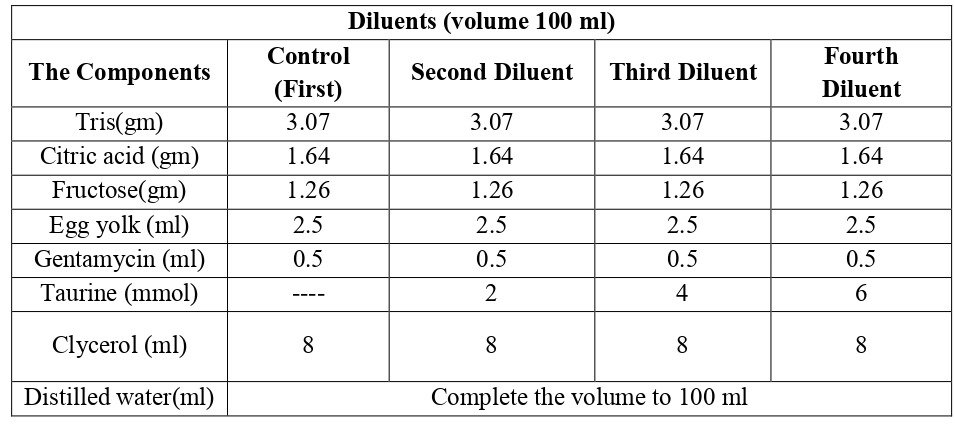The Effect of Adding Levels of the Organic Acid Taurine on Improving the Characteristics of Diluted and Cooled Semen of Arabi Rams
Keywords:
Taurine, Semen, Arabi Rams, Characteristics, Cooled.Abstract
This investigation was place from 1/10/2022 to 31/1/2023 in the College of Agriculture / University of Basra / Karma Ali animal field. Five Orabih rams with similar weights and ages of 2.5 to 3 years were bred for the research. Fortwo weeks, the animals were taught to collect semen using the Kabash's fake vagina and given a 2 kilogram diet with two meals each day. Semen was collected three times a month after training, and rams' sperm was added taurine organic acid (zero, 2, 4.6 mmol) and stored in a cryosafe at 5 º for up to 48 hours. A computer analyzed all diluted and chilled semen properties.
Results of the study:T2 treatment significantly outperformed other coefficients in individual movement, sperm concentration, and percentage of live sperm in refrigerated semen (P<0.05). Cryostorage zero (hour) significantly outperformed other periods in pH values, individual movement, and sperm concentration, and exceeded 24 hours (P<0.05). T2 treatment significantly outperformed (P<0.05) other coefficients in pH, individual sperm motility, and live sperm percentage at zero hour, while T2 recorded the highest sperm concentration in refrigerated semen at 24 hours (P<0.05).
2: The control and T6 coefficients had the highest percentagesof dead sperm (P<0.05) compared to other transactions, with the 72-hour cold storage period having the highest moral percentages (P<0.05). The T6 treatment and 72-hour storage period also had the highest moral percentages (P<0.05) in the percentage of dead sperm.
T2 transaction significantly outperformed (p<0.05) the straight linear velocity VSL and linearity of the path LIN of sperm, and the duration of cold storage zero (hour) significantly outperformed 72, 48, and 24 hours in VSL and LIN ratios for sperm. T2 transaction at cold storage zero (hour) significantly outperformed VSL and LIN ratios of spe
Downloads

Published
How to Cite
Issue
Section
Copyright (c) 2024 Authors

This work is licensed under a Creative Commons Attribution-NonCommercial 4.0 International License.








